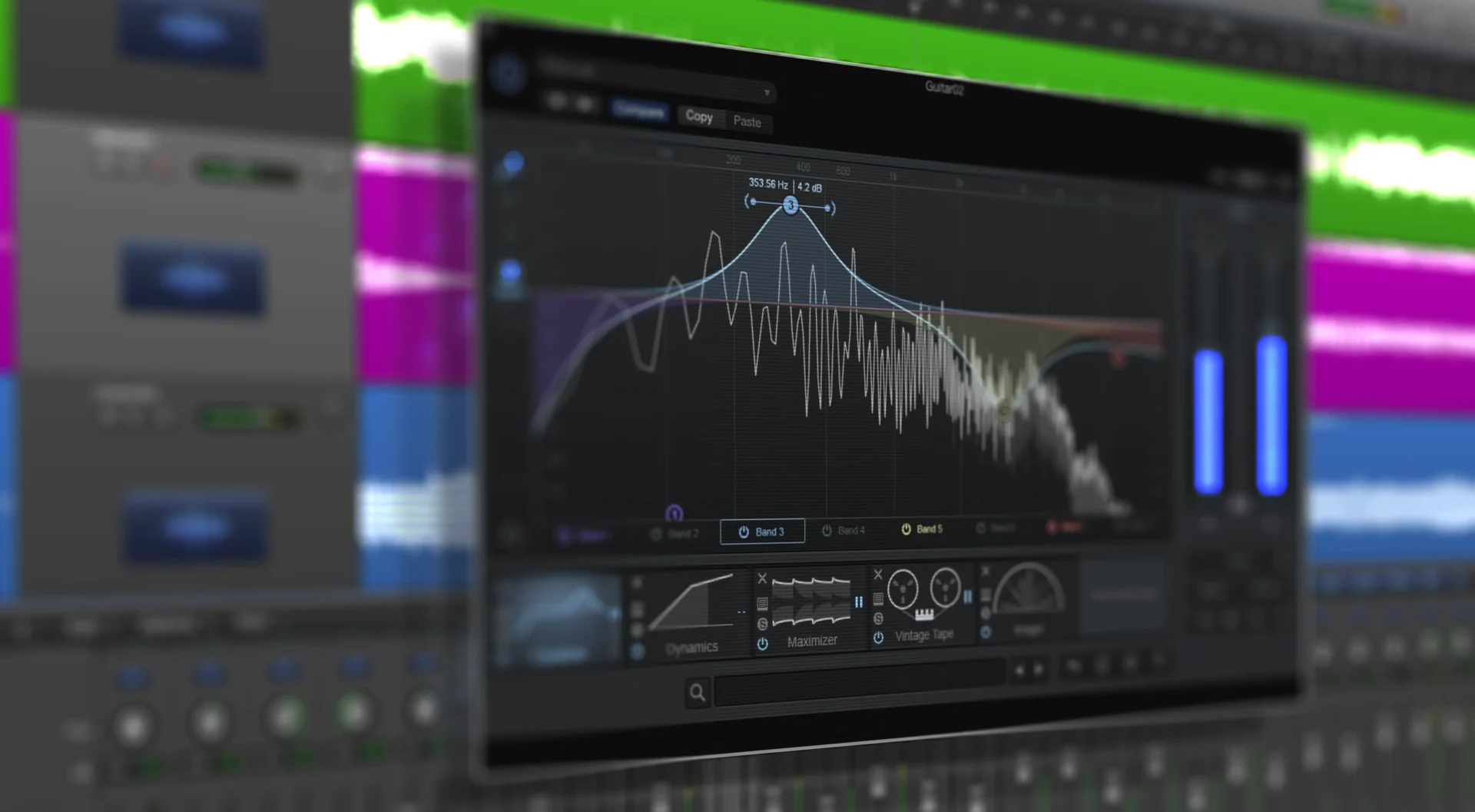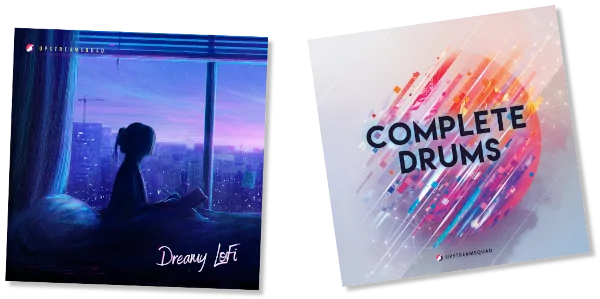If you’re new to music production, you may have heard the term “VST plugins,” but you might not fully understand what it is or what it means. Virtual Studio Technology (VST) plugins are an essential tool for any music producer, but they can be intimidating if you’re just starting.
Put simply, VST Plugins are applications designed specifically for recording and producing digital audio. It connects directly to the host program – usually some DAW (Digital Audio Workstation) – allowing you to create new sounds and effects.
Rest assured that using VSTs doesn’t require an advanced degree in sound design. Anyone can learn how to use VST plugins and achieve great results in their music.
In this article , we’ll explain what VST plugins are, how they work, and why they are so necessary for music production. By the end of this article, you’ll better understand what VST plugins are and how you can use them. So, if you’re ready to take your music production skills to the next level, let’s dive in and explore the world of VST plugins.
Definition And Overview
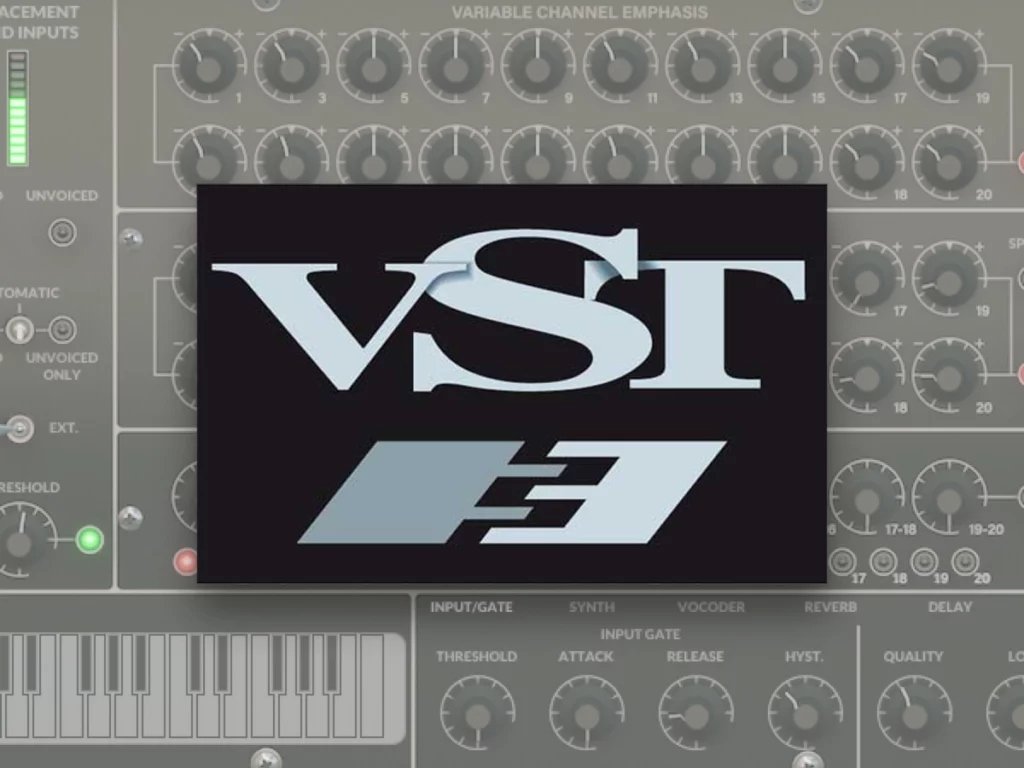
A VST plugin is a virtual studio technology (VST) audio plugin that can be used to add effects and instruments to digital audio workstations. Developed by Steinberg Media Technologies, the software was first released in 1996 and is now one of the industry standards for music production. It enables users to access different plugins that use DSP algorithms to create or manipulate new sounds.
VSTs offer an intuitive way to enhance any project with professional-quality sounds quickly and easily. This makes them invaluable tools for musicians, composers, and producers worldwide. With so many options on the market today, it’s no wonder why they remain popular for creating innovative sonic textures in modern productions.
VST plugins also come in four types: instrument, effect, MIDI, & mastering VST plugins. Let’s cover these four types of plugins and what they offer to producers.
Types Of Vst Plugins
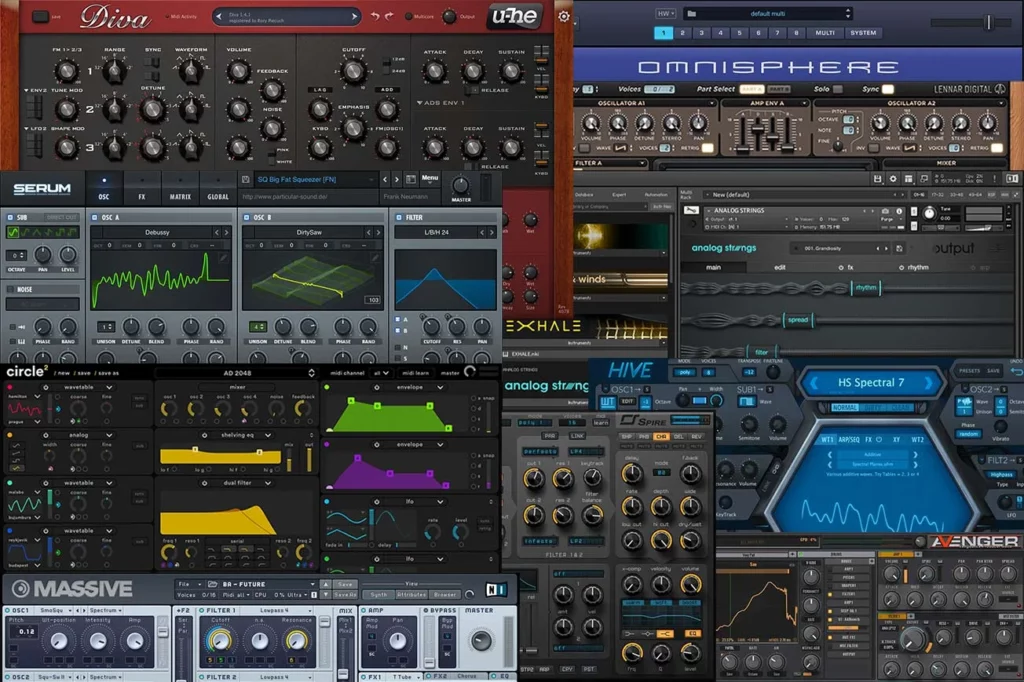
There are over 1,000 types of VST plugins available on the market today.
As a result, producers and sound engineers have access to an unprecedented range of virtual instruments and audio effects for their music production needs.
VST plugins come in two main categories: instrument plugins and effect plugins.
Instrument plugins help create virtual sounds such as basses, drums, strings, brass, or synthesized sounds.
Effect plugins allow users to alter existing audio tracks by adding reverb, delay, or other effects that otherwise may not be available with traditional hardware equipment.
VST MIDI Plugins are also popular among musicians who use digital sequencing software like Ableton Live or FL Studio. These plugin types allow users to control various parameters of a musical instrument using MIDI signals sent directly from a computer keyboard or controller device. During live performances, they also trigger samples such as drum loops or vocal snippets. Audio Track Plugins offer similar functions but instead process entire audio tracks rather than individual notes within a sequence.
Finally, Mastering Plugins provide mastering options such as specialized equalization (EQ) and compression, which are often necessary when preparing mixes for professional release.
Overall, these VST Plugins all serve unique purposes within modern music production – from creating new sounds to manipulating existing ones – making them essential tools for any producer’s arsenal!
Benefits Of Using Vst Plugins
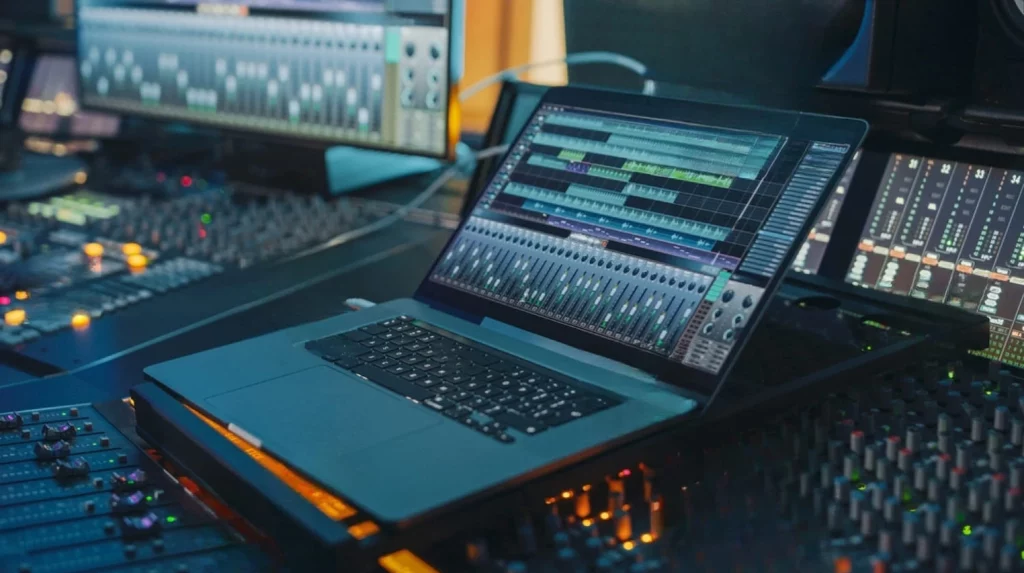
VST plugins are a great way to add more depth and richness to audio projects. There are numerous benefits to incorporating these tools into the music creation process.
The first benefit is that producers have many effects plugins, EQ plugins, and other digital instruments at their fingertips. This gives producers the ultimate creative potential.
Another benefit is that these plugins can be used in various host programs, such as DAWs (Digital Audio Workstations), MIDI sequencers, or basic audio editors like Audacity. This makes them extremely versatile and allows users to use any software platform’s capabilities when creating music or audio processing.
VST plugins also give producers the tools to craft unique sounds quickly and easily. With so many options from which to choose, it’s easy to find the exact effect or instrument needed for any project – all while avoiding tedious manual processes that would otherwise be necessary if using analog equipment. Additionally, some VSTs come with integrated visuals, allowing users to visualize how specific settings will affect their final product before committing anything permanent.
Music producers should consider taking advantage of VST plugins: they offer unlimited creativity, are compatible across many platforms, provide quick results, and feature built-in visualizations.
All this makes one powerful toolkit that can help anyone create professional-sounding music.
| Aspect | Benefit of Using VST Plugins |
|---|---|
| Creative Potential | – Producers have many effects plugins, EQ plugins, and digital instruments, offering ultimate creative freedom. |
| Versatility | – Can be used in a range of host programs: DAWs, MIDI sequencers, and basic audio editors like Audacity. |
| Sound Crafting | – Allows for quick and easy crafting of unique sounds, avoiding manual processes of analog equipment. |
| Visualization | – Some plugins have integrated visuals, allowing users to predict how settings will impact the final product. |
| Overall Advantages | – Offers unlimited creativity, compatibility across platforms, quick results, and built-in visualizations for professional music. |
Finding The Right Vst Plugin For Your Needs
Finding the right VST plugin for your needs is essential to producing a great track.
Several different formats of plugins can be used in digital audio workstations (DAWs). Audio Units (AU) and Virtual Studio Technology (VST) plugins are in most major DAWs. To get started, you’ll need to know what type of plugin will work best for you and how it fits into your workflow.
When looking at specific types of plugins, there’s an endless variety, from virtual synthesizers to samplers, processors, and effects plugins, among others.
Free plugins are great for beginners as they cost nothing and can help you get comfortable using VST plugins in your projects.
We’ll discuss free vs. paid VST plugins in more detail later in the article.
How To Use A Vst Plugin In Your Daw
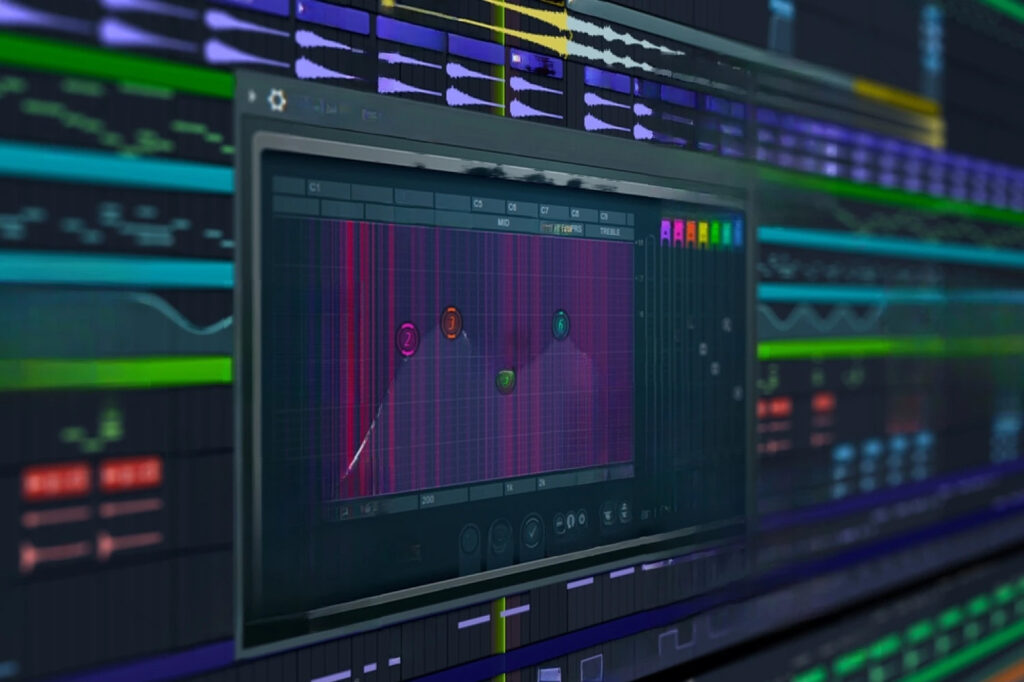
To start using a VST plugins, look through the file manager or browser in your DAW. There is usually one folder dedicated to VST Plugins. Once you’ve found the plugin you need, click on it and add it to an audio track or MIDI track, depending on the type of VST plugin you selected.
As long as the plugin is compatible with your host application, it should be straightforward! Once the plugin is loaded into your project, you should be able to adjust its parameters and settings according to what you want to achieve musically. Some plugins allow you to save custom presets to be reused later when working on other projects.
If you want to get the most out of VST plugins, then read the manual.
Yes, read the manual. This may not be the most exciting idea, but it will be the most beneficial when learning to use your VST plugins.
Now, armed with this knowledge about how to use a vst plugin in your DAW, we’re ready to explore their incredible audio processing capabilities!
Audio Processing Capabilities Of Vst Plugins
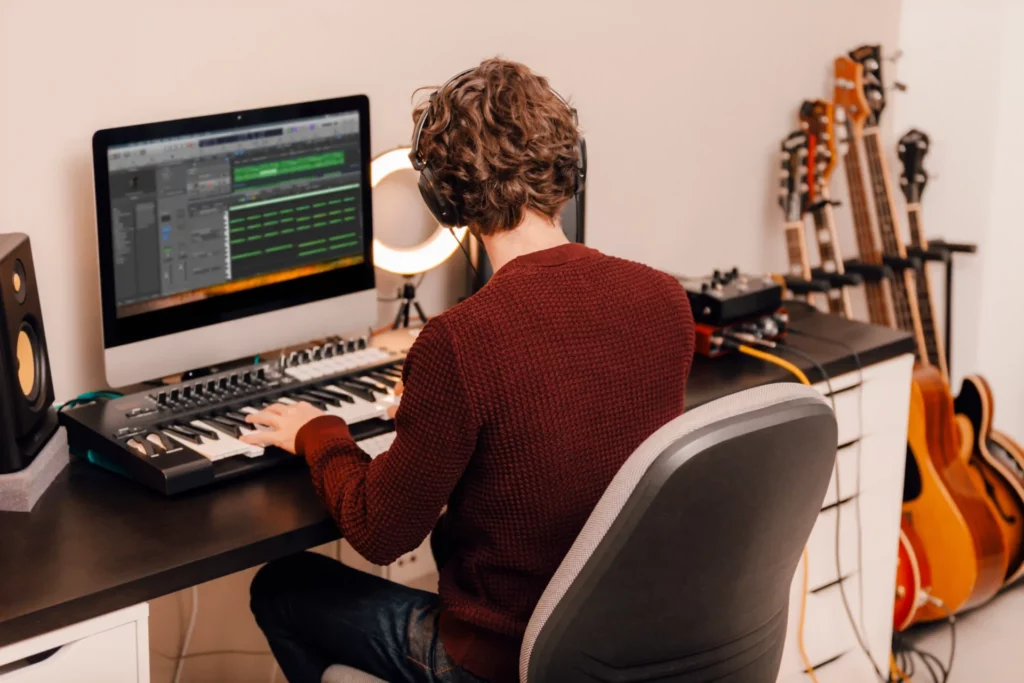
VST plugins are a popular audio plugin standard used for manipulating and processing sound. They allow users to apply various effects, filters, and manipulation techniques to an audio input. VST plugins take the incoming audio signal and route it through software emulations of physical hardware or digital algorithms. These processes enable a wide range of audio effects, allowing producers to alter their sounds to achieve desired results.
The capabilities of VST plugins can be broken down into two main categories: modulation and synthesis.
Modulation involves altering sound parameters such as frequency, amplitude, attack time, decay rate, etc., while synthesis creates entirely new sounds from scratch using oscillators and other tools. For example, many synthesizers have built-in envelopes that extremely accurately simulate real-world instruments like drums or pianos. Other VSTs include delay units for adding echo effects or reverb processors for softening specific frequencies within a mix.
It’s also important to note that some VSTs offer additional features beyond traditional audio processing functions, such as MIDI mapping capabilities which enable you to control external devices via your DAW’s controller setup; Groove boxes for sequencing complex drum patterns; Samplers for playing back prerecorded samples; And step sequencers for programming rhythmic sequences with ease.
These combined features make VSTs one of the most versatile music production technologies. With the proper knowledge and skillset, users can create incredible sounds with just a few clicks!
Whether you’re looking to create unique soundscapes or manipulate existing recordings in creative ways, VST plugins offer something for everyone. This makes them essential tools in any modern recording studio setup!
Compatibility Considerations For Different Platforms

When using VST plugins, it’s crucial to consider compatibility with different operating systems and digital audio workstations. VST plugins are primarily designed to work with Windows-based systems but can also work on Mac OS and Linux systems with the appropriate software.
Audio Units (AU) are another plugin commonly used on Mac-based systems. While AU plugins are similar in functionality to VST plugins, they are designed for Apple computers and can’t be used on PCs.
VSTi, or Virtual Studio Technology Instruments, are a subset of VST plugins explicitly used for virtual instruments, such as synthesizers and drum machines. They are compatible with most DAWs that support VST plugins.
It’s important to note that while VST plugins can be used with a wide range of DAWs, not all plugins will work with every DAW. It’s essential to check the plugin’s compatibility with your DAW before purchasing.
Regarding compatibility, it’s also essential to consider the version of the plugin and the DAW you’re using. Older versions of plugins may not work with newer versions of DAWs, and vice versa.
When choosing and using VST plugins, it’s crucial to consider compatibility with your operating system and DAW. While VST plugins are primarily designed for use with Windows-based systems, they can also work on Mac OS and Linux systems. AU plugins are specific to Mac-based systems, and VSTi plugins are designed specifically for virtual instruments. When selecting a plugin, always check its compatibility with your DAW and version before purchasing.
Free Vs. Paid Vst Plugins
When it comes to VST plugins, you have the choice between free and paid plugins. While it’s true that paid VST plugins often offer a more comprehensive range of features and better support, free plugins can be just as good as paid plugins and in some cases, even better.
Many talented developers create excellent free VST plugins suitable for professional music production. These plugins can offer an array of effects, instruments, and tools that can enhance your tracks without costing you a penny. As a beginner music producer, it’s worth exploring some of the free plugins available to get a sense of what they can offer and how they work.
Free plugins are also an excellent way to keep costs down as you develop your skills and style. By experimenting with different free plugins, you can figure out which ones work best for you and invest in paid plugins that match your preferences.
Whether you use free or paid VST plugins, the key is to find the ones that work best for your music production needs. Free plugins can be just as effective as paid plugins, and they can help you create professional-sounding tracks without breaking the bank. So feel free to explore the world of free plugins, as they may surprise you with their quality and functionality.
| Criteria | Free VST Plugins | Paid VST Plugins |
|---|---|---|
| Cost | No financial investment required. | Requires a purchase or subscription. |
| Quality | Can match or surpass the quality of many paid plugins. | Often associated with premium quality & advanced features. |
| Developers | Many talented developers produce high-quality free plugins. | Typically produced by established companies. |
| Use Case for Beginners | Ideal for learning and experimenting without financial commitment. | Might be overwhelming and expensive for beginners. |
| Features & Support | Might have limited features and less dedicated support. | Comprehensive features with professional support. |
| Range | Vast range of effects, instruments, and tools. | Specialized and niche plugins available. |
| Investment Decision | Allows users to identify preferences before making a financial commitment to certain tools or effects. | Direct purchase based on needs and reviews. |
| End Goal | Effective for creating professional-grade tracks without monetary investment. | Chosen for specific, often advanced, music production needs. |
Frequently Asked Questions
What Are The Best Vst Plugins For Beginners?
The best VST plugins for beginners are the ones that are simple and easy to use as well as having the option to get more advanced.
Here are a few of the top VST plugins that we recommend for beginners
1. Xfer Serum
2. izotope Neutron
3. Fab Filter Pro Q 3
4. reFX Nexus 4
5. Spitfire Labs Instruments
6. Your DAW’s stock plugins
What Are The Differences Between Free And Paid Vst Plugins?
When it comes to VST plugins, one of the biggest questions that often arises is: what are the differences between free and paid versions? On the surface, they might look similar – but there can be some surprising distinctions.
To start with, let’s talk about price. Generally speaking, free VST plugins are just that – free. You may have to pay for specific features or updates if available. Paid versions usually cost money upfront, but they often come with more comprehensive feature sets and technical support from a team of experts who know their stuff inside out.
The other key difference when comparing these two plugin types is quality. While many free options are competent tools for creating music, they sometimes offer different levels of sonic fidelity found in paid plugins; this could mean fewer parameters to tweak and less sophisticated sound-shaping capabilities overall. Consequently, those looking for high-end production should consider investing in premium solutions.
That said, budget-minded producers should consider the vast array of excellent and reliable free VST plugins today; playing around with them could yield great results without breaking the bank!
How Can I Get The Most Out Of My Vst Plugins?
Exploring each plugin thoroughly will give you a better understanding of its functions and capabilities.
Setting aside enough time to experiment with different settings is also essential. This will help you find the right combination of parameters that bring out the best performance possible.
Remember to read the manual for each VST plugin you use. Boring advice, but this will give you a better understanding of the plugins.
Don’t forget about automation. Using automation allows us to control many aspects of our mix over time to achieve professional-sounding results.
Start Using VST Plugins Today!
Virtual Studio Technology (VST) plugins are an essential tool for any music producer. Whether you’re a beginner or an experienced music producer, a VST plugin can help take your tracks to the next level. As we have seen, VST plugins come in many different types and offer a range of benefits, from enhancing sound quality to streamlining the music production process.
When choosing the right VST plugin for your needs, it’s essential to consider factors such as compatibility, cost, and functionality. By taking the time to research different plugins, you can find the ones that best suit your workflow and creative vision.


